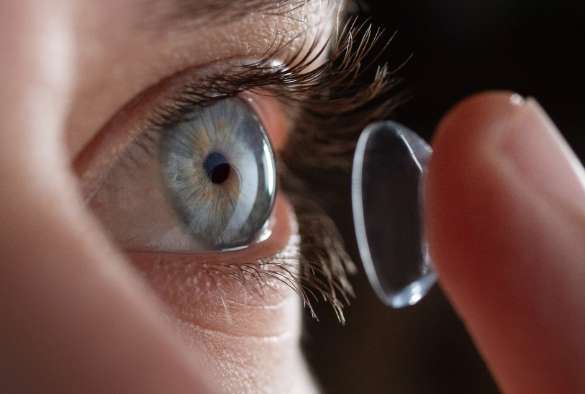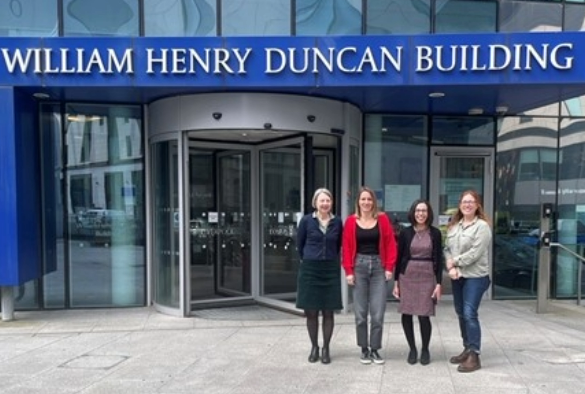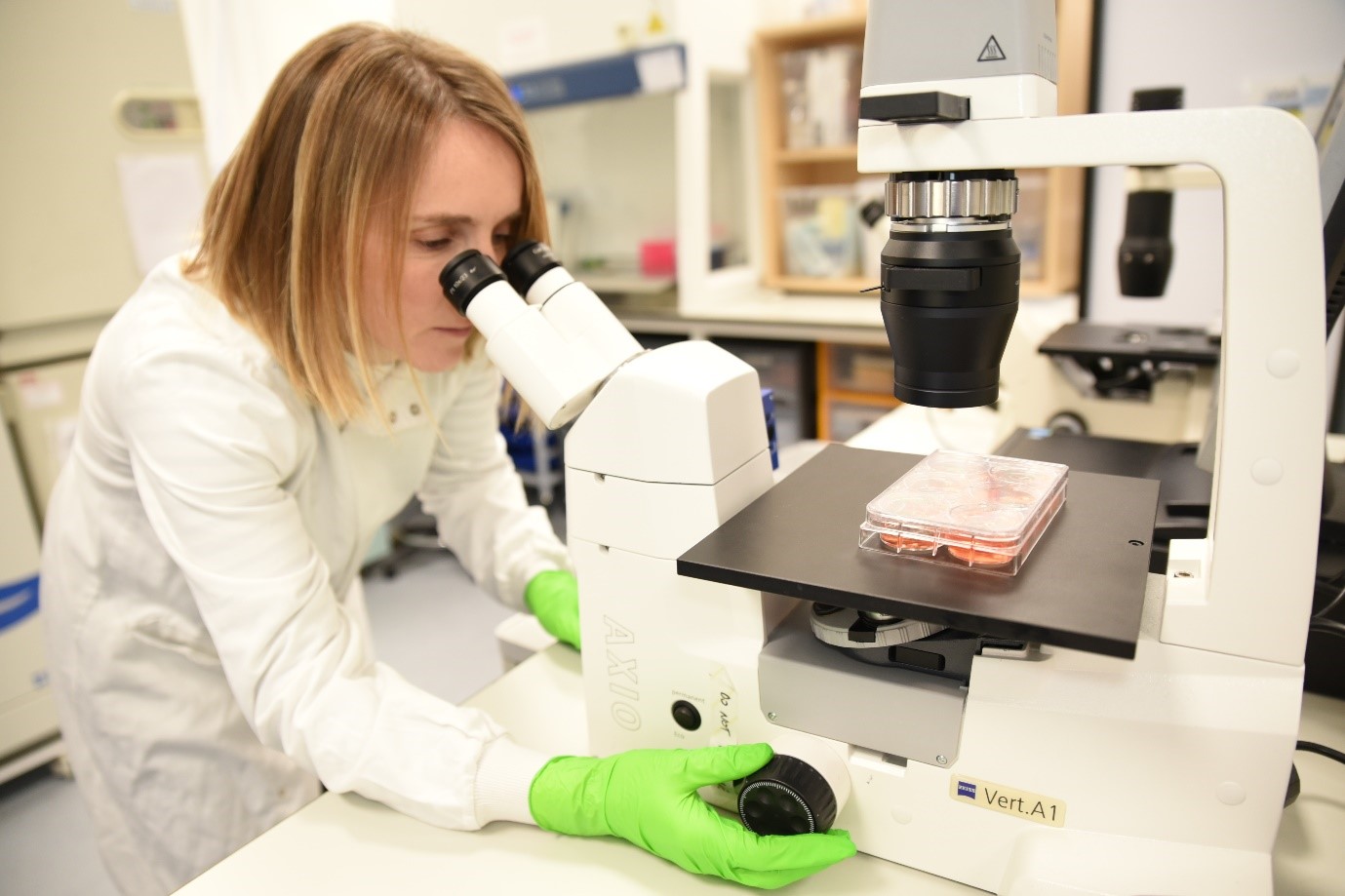£2.1m award to develop eye cell ‘bandage’

A team of vision researchers from the University of Liverpool have received £2.1m to develop a contact lens that can repair eye damage.
Dr Hannah Levis is leading the team which will, over the next 3 years, work on an eye ‘bandage’ that makes direct contact with the outer layer of the eye, or corneal epithelial tissue, to heal persistent defects.
The corneal epithelium covers the front of the cornea and acts as a protective barrier. Sometimes this layer can become damaged, and the healing process can be impaired leading to recurrent problems. Defective corneal wound healing can be caused by inflammation, damage to nerves in the cornea, physical injury such as chemical or thermal burns or some hereditary disorders.
The team made up of Dr Levis, Professor Rachel Williams, Dr Victoria Kearns, Dr Nardine Menassa and Dr David Robinson from the Institute of Life Course and Medical Sciences, are developing the bandage which will transfer corneal epithelial cells directly to the ocular surface of the eye via a soft contact lens. Their 'cell bandage' will enable rapid healing of the wound by the transplanted cells with the additional benefit provided by the contact lens element of the therapy for the protection from shearing forces that occur when blinking.
[caption id="attachment_120540" align="alignnone" width="585"] Members of the team outside the William Henry Duncan Building[/caption]
Members of the team outside the William Henry Duncan Building[/caption]
Dr Hannah Levis, Reader in Ophthalmic Bioengineering, Eye & Vision Sciences at the University of Liverpool said: “Persistent corneal epithelial defects pose a clinical challenge even for experienced ophthalmologists and unfortunately standard treatments tend to be ineffective. Sadly, this results in patients experiencing prolonged discomfort and diminished vision. As well as being uncomfortable for the patient, the complex nature of the disease, means patients must be examined multiple times a week, with some patients requiring up to 90 visits a year. This has a huge impact on NHS budgets.
“We’re delighted to have received this funding to carry out this important work that will positively impact patient welfare but also provide cost saving alternatives for healthcare services.”
[caption id="attachment_120541" align="alignnone" width="585"] Dr Hannah Levis, Reader in Ophthalmic Bioengineering, Eye & Vision Sciences[/caption]
Dr Hannah Levis, Reader in Ophthalmic Bioengineering, Eye & Vision Sciences[/caption]
The project is funded by the Medical Research Council Developmental Pathway Funding Scheme and is being carried out in partnership with the Scottish National Blood Transfusion Service. The project concept was initiated during an EPSRC Engineering for Growth Fellowship on ‘Building advanced materials to treat vision loss’ and was developed further through an EPSRC IAA Exploration Award.
Professor Rachel Williams added: “This is an exciting project that will not only be clinically significant but is a fantastic example of the potential impact that can result from multidisciplinary collaborative research across engineering, life and clinical sciences.”